DROPS Alpaca
An all time favorite made purely from soft alpaca
from:
2.38£
2.99€
Content: 100% Alpaca
Yarn Group:
A (23 - 26 stitches)
/ 5 ply / sport
Weight/length: 50 g = approx 167 m
Recommended needle size: 3 mm
Knitting tension: 10 x 10 cm = 24 sts x 32 rows
Care: Hand Wash, max 30°C / Dry Flat
/ Feltable
Made in: Peru
Raw material origin: Alpaca from Peru
This yarn has an Oeko-Tex® certification (certificate number 16.HPE.92779), Standard 100, Class II from the Hohenstein Institute. This means that is has been tested for harmful substances and is considered safe in human-ecological terms. Class II means the yarn is suitable to come in direct contact with the skin to a large extent, such as blouses, shirts, mattresses, etc.
DROPS Alpaca is a lovely yarn spun from 3 strands of 100% superfine alpaca, with an extra twist to provide a durable surface. The alpaca fiber is untreated, which means that it is only washed and not exposed to any chemical treatment prior to the dyeing. This highlights the fiber’s natural properties, while it also provides a better shape and texture quality.
DROPS Alpaca has a large and varied range of patterns available in the DROPS collection. Garments made in this yarn are lightweight and comfortable, super soft directly on the skin, and have a nice, characteristic sheen.
Read more about our products' sustainability here
Please be aware that the colours shown may vary from screen to screen in the same way that shades may vary slightly from dye lot to dye lot.
First of all, consider just airing the garment, instead of washing it. If you still desire to wash it, here are some guidelines:
- Hand wash at 30ºC - separately - with wool detergent without enzymes or optical brighteners.
- Don’t let the garment soak. Move the garment gently back and forth, do not rub or squeeze it.
- Rinse the garment until the rinse water is completely clear, making sure the water temperature stays uniform.
- Do a light centrifugation of the garment (about 800rpm), choosing a program that DOES NOT take in water at the start. Or press carefully the water out of the garment with a dry towel. The garment shouldn’t be twisted or rolled.
- To dry the garment, shape it and lay it flat - do not hang - ideally on a warm bathroom floor or on top of a drying rack in a room with good air circulation. Never dry the garment in direct sunlight.
- Don’t tumble dry.
Note: If you are washing a project made with this yarn combined with another, the general guideline is to follow the washing instructions for the most delicate of the yarns you are working with.
Thinking about felting this yarn?
See how this yarn looks before and after felting:


Needles: 5.50 mm
Before: 16 sts x 21 rows
After: 21 sts x 32 rows
Do you have a question about this yarn?
See a list of frequently asked questions (FAQ) about our yarns.
1) What type of fibers make the DROPS yarns?
Yarn can be made from a large number of natural and synthetic fibers. DROPS carries mainly yarns made from wool, cotton, alpaca, linen, mohair and silk. Each fiber type has its own qualities, and they are often mixed to take advantage of the best properties of each one. Coarse yarn has the advantage of being stronger and more durable, and finer fibers offer more softness and comfort. Here a bit about the main fibers we carry:
Alpaca:
Alpaca fleece is the natural fiber harvested from an alpaca, and it is similar in structure to sheep wool fiber. Its softness comes from the small diameter of the fiber, similar to merino wool. It is a soft, durable, luxurious and silky natural fiber. Yarn made from alpaca fibers does not felt or pill easily, and it can be light or heavy in weight, depending on how it is spun. While similar to sheep’s wool, it is warmer, not prickly, and has no lanolin, which makes it hypoallergenic. Alpacas come in 22 natural colors, with more than 300 shades from a true-blue black through browns-black, browns, white, silver and rose-greys.
Mohair:
This fiber comes from the Angora goats, and it's considered a luxury fiber. Mohair yarn is warm as wool, but much lighter in weight; it is durable, dyes well and does not felt easily. Mohair fibers have also a distinctive luster created by the way they reflect light. Despite being a hard fiber, mohair is usually spun into a very fluffy yarn, resulting in airy and lustrous garments.
Wool:
The wool fibers come from the skin of sheep and are relatively coarse fibers. Two striking characteristics of wool are its susceptibility to heat and its felting property, which is caused by the scales on the surface. Depending upon the breed of sheep, the appearance of the wool varies.
Wool from Merino sheep is considered the finest type of wool, having as characteristics that is finely crimped and soft. All the Merino wool in the DROPS yarns has its origins in South America, coming from sheep that have not been subject to Mulesing.
Pure new wool is wool made directly from animal fleece, and not recycled from existing wool garments.
Machine washable wool is wool treated chemically to minimize the outer fuzzy layer of the fibers, and be therefore fitable for machine wash (see Superwash).
Silk:
The silk fiber is a fine continuous fiber produced from the cocoon of a moth caterpillar known as the silkworm. While silkworm is cultivated, the wild or tussah silk is obtained from uncultivated silkworm cocoons. Silk fiber is one of the strongest natural fibers and makes a wonderful knitting yarn. It blends really well with other fibers, especially wool. Silk also dyes beautifully with natural dyes.
Vegetable fibers:
There are several varieties of vegetable fibers, found in the cell walls of plants or vegetables. Of all the varieties, two are recognized as major knitted or textile fibers. They are cotton and linen.
Cotton is the fiber surrounding the seeds in a cotton pod, and it is almost pure cellulose. Cotton is usually white in color but there are green and brown varieties as well. The cotton fiber is most often spun into yarn or thread and used to make a soft, breathable textile that is good for summer clothing and accessories, making a weaker yarn than silk or linen but stronger than wool.
Mercerized cotton is cotton that has been through a mercerization treatment. This treatment gives cotton fabrics and threads a lustrous yarn that is more lustrous than conventional cotton. It is also stronger, takes dye a little more readily, makes the yarn more resistant to mildew and reduces lint. It also may not shrink or lose its shape as much as "regular" cotton.
Linen is a fiber derived from the stalk of the flax plant that is durable and stronger than any other fiber. The linen fiber is relatively soft, straight and lustrous and becomes more beautiful with age. Linen is more comfortable to wear in hot temperatures than cotton, due to the fact that it absorbs moisture better and dries more quickly.
Other materials used in our yarns include synthetic fibers such as acrylic, viscose, polyamide (nylon) and polyester. These fibers are used mostly to give strength to a yarn (like our sock yarn, DROPS Fabel) or a special kind of structure (like our blown yarn, DROPS Air).
The polyamide fibre, commonly known as nylon, is very strong, durable, lightweight, easy to care for (can be machine washed and dried), and elastic, which makes it perfect for blending with other fibres to produce hard-wearing yarns like sock yarn.
Compared to polyester, polyamide is softer and more flexible, but it also absorbs more water and dries slower.
3) What type of information can I find on the DROPS yarn labels?
All DROPS yarn labels include information about fiber content (wool, cotton, etc.), weight in grams and ounces, length in meters and yards, washing instructions and symbols (explained here), color number, dye lot number and yarn group information.
4) What are the DROPS yarn groups?
All DROPS yarns are classified into 6 different thickness groups (A to F). Yarns in a same group have similar knitting tension/gauge, and can therefore be interchanged in patterns; however the length may be different, so when substituting always calculate the amount of meters/yards needed for the pattern to know the amount of yarn you need to get.
5) Can I use a different yarn than the one mentioned in the pattern?
Yes, as long as the yarn can be worked in the same knitting tension/gauge. Always swatch to make sure you get the same number of stitches in width and rows in height as given in the pattern.
Remember that different yarns with different textures, will give the garment different looks. The yardage/length may also be different, so when substituting always calculate the number of yards needed, in order to know the amount of yarn you need.
Read more about how to calculate the amount of an alternative yarn - and how to replace 1 thread of a yarn with 2 or more of another, here.
6) What does it mean when a yarn is “Superwash”?
A superwash wool is a special wool product that has been treated or processed in a way that allows it to be machine washable. Many people are afraid to work with wool because it is so easy to shrink (though some shrink wool on purpose) and superwash wool can allow them to work with great fibers without worry. (Read more here).
7) What does “Oeko-Tex® certified” means?
The Oeko-Tex® Standard 100 was introduced at the beginning of the 1990s as a response to the needs of the general public for textiles which posed no risk to health. The Oeko-Tex® Standard 100 is a globally uniform testing and certification system for textile raw materials, intermediate and end products at all stages of production. The test for harmful substances comprise substances which are prohibited or regulated by law, chemicals which are known to be harmful to health, and parameters which are included as a precautionary measure to safeguard health.
For more info go to www.oeko-tex.com
10) How accurate are the colours on the shade cards online?
When obtaining images for the shade card, we do our best to achieve the highest level of color accuracy. Unfortunately, we cannot guarantee how images will appear on your computer screen. Every monitor displays color differently, some colors might look darker than they really are, and some colors might be more saturated on some screens. If you experience that many of the yarn colors looks different on your screen than the actual color of the skeins, you can adjust the setting on your monitor.
11) What is a micron? What does super fine / extra fine mean?
The fineness of yarn fibers is measured in microns (thousands of millimeters). Super fine alpaca wool is 26-28 microns. Fine merino wool is less than 21.5 microns and extra fine merino is under 19.5 microns. The less microns the softer and more delicate a quality can be, the more microns the more hard wear the quality will be.
The reason why the microns in a yarn’s fibers are important is that the yarn will eventually become something else, and how delicate or coarse a yarn is will determine in part what we use it for. That’s why we recommend the softest yarns (like DROPS Baby Merino) for baby clothing, or why we choose to use a more hard wear yarn like DROPS Snow, for a seating pad or slipper.
12) Why are the colours in my skeins of print yarn different?
The reason why two skeins of a same print yarn look different can be 1) that both skeins are part of different dye lots; 2) that the skeins have been dyed using a technique called "magic print" (the one used for example in DROPS Delight), which provides unique patterns and smooth colour transitions to each skein, meaning also that within one dye lot, lighter or darker varieties might appear. This is no fault or defect, but part of the yarn's character.
13) My store doesn’t have the colour I want, what can I do?
If your DROPS store doesn’t have the yarn colour you want, try contacting a DROPS Super Store (the ones with the golden badges) - they will make sure to get a hold of the colour even if they don’t have it in stock themselves. See a list of all DROPS stores here.
14) Where can I find a specific dye lot of a colour?
Always try contacting your DROPS store first. If they do not have the dye lot you want we recommend you to ask other knitters and crocheters in the DROPS Workshop in Facebook or Ravelry, which may have the dye lot in their stash and might be willing to part from it.
Yarn sheds because there's not enough twist to hold all of the fibers together. All yarns have excess fibers (from production) that might come off as lint or shedding, in varied degrees that depend on how the yarn is spun. Brushed yarns ("hairier" yarns) like DROPS Melody, have more of these loose fibers than other yarns, and therefore shed more. Shedding also depends on what is worn under or over the garment, and whether this pulls at the yarn fibers. It’s therefore not possible to guarantee that there will be no shedding.
Below are some tips on how to get the best result when working with hairier yarns:
- When the garment is finished (before you wash it) shake it vigorously so the looser hairs come off. NOTE: do NOT use a lint roller, brush or any method that pulls at the yarn.
- Place the garment in a plastic bag and put it in your freezer - the temperature will cause the fibers to become less attached to each other, and excess fibers will come off easier. Leave in the freezer for a few hours before taking it out and shaking it again.
- Wash the garment according to the instructions on the yarn label. Garments worked with hairier yarns usually need to be shaken once dry after washing, so that the hairs rise and any excess fibers can come off.
Pilling is a natural process that happens to even the most exclusive of fibers. It's a natural sign of wear and tear that is hard to avoid, and that is most visible in high friction areas of your garment like a sweater's arms and cuffs.
You can make your garment look as new by removing the pilling, using a fabric comb or a pill/lint remover.
How can I replace this yarn?
If you are looking to replace this yarn with another DROPS yarn, you can use another yarn within the same yarn group, or try our yarn converter!
Comments / Questions (514)
![]() Markus Jüngling wrote:
Markus Jüngling wrote:
Ich habe nachgelesen, dass die „Superwash Behandlung“ aus einem Polymer-Überzug auf der Wollfaser besteht. Leider habe ich nicht herausfinden können, um welches Polymer es sich handelt. Können sie mir bitte mitteilen, mit welchem Polymer ihre Superwash Behandlung erfolgt (auf Basis biologischer Ausgangsmaterialien oder auf Erdölbasis).
10.03.2025 - 12:53DROPS Design answered:
Lieber Her Jüngling, hier lesen Sie mehr über Superwash Prozess und mehr. Viel Spaß beim Stricken!
12.03.2025 kl. 10:42
![]() Joan Thénot wrote:
Joan Thénot wrote:
Combien de pelotes aurai-je besoin pour tricoter une paire des moufles pour une homme?
23.02.2025 - 14:37
![]() Birgit Zwergius wrote:
Birgit Zwergius wrote:
Min datter har fundet en opskrift på en nederdel hvor der strikkes med 2 garner. Der skal bruges: 250g , 100%uld af 50g/125m og 100g, Alpaca 50g/400m Strikkefastheden: 19m x 32p på 4,5 mm er 10 x 10 cm. Hvilket Dropsgarn kan I anbefale og hvor meget skal jeg bestille af hver?
18.02.2025 - 09:31DROPS Design answered:
Hej Birgit, skriv dit spørgsmål inde på selve opskriften, så kan vi hjælpe dig med at regne garnforbruget ud :)
20.02.2025 kl. 13:30
![]() Aliona wrote:
Aliona wrote:
Hello, What colors in 100% alpaca are undyed? Thank you
05.01.2025 - 08:10DROPS Design answered:
Dear Aliona, only colour 0100 is undyed. Happy knitting!
06.01.2025 kl. 12:49
![]() Ulla wrote:
Ulla wrote:
Hej, min mand ønsker sig en sweater i 100% alpaca. Dén, han har fundet har 4 ply. Her står både 5 ply og 3 tråde. Hvad betyder det? Hvis sweateren skal være udendørs/overtøj, kan jeg så strikke med dobbelt-tråd eller bliver det klumpet/er der en opskrift jeg kan holde mig til? På forhånd tak for svar.
04.12.2024 - 13:08DROPS Design answered:
Hei Ulla. I strikkeverden snakkes det litt forskjellig angående tykkelse på garn (garngruppe, ply, sport, fingering, DK, worsted osv). I DROPS garn / DROPS garngruppe A (Alpaca) finner du både garn med ply 4 og ply 5, men de har ca samme tykkelse og kan brukes i samme oppskrift, så lenge du får den strikkefastheten som er oppgitt i den oppskriften du skal strikke etter. Blir ikke klumpete ved å bruke 2 tråder Alpaca. Bruk vår søkemotor og velg en genser som er strikket i garngruppe C (A+A=C). mvh DROPS Design
09.12.2024 kl. 08:07
![]() Hson wrote:
Hson wrote:
Priserna stämmer inte! Det står att Garnlagret tar 29 kr för detta garn Men de tar 36 kr!! Detta händer jätteofta, kan ni inte försöka justera?
02.12.2024 - 13:00DROPS Design answered:
Hei Hson. Takk for tilbakemeldingen. Vi vil ta kontakt med butikken asap og be dem oppdaterer prisene. mvh DROPS Design
02.12.2024 kl. 14:19
![]() Sabine wrote:
Sabine wrote:
Guten Morgen, welches Kid-Silk Garn empfehlen Sie zu Alpaka Himbeerrose?
08.11.2024 - 07:28DROPS Design answered:
Liebe Sabine, gerne wird Ihnen Ihr DROPS Händler helfen, die besten passenden Farben zu empfehlen - auch per Telefon oder per E-Mail, so ist es auch für Sie viel einfacher, direkt mit den Laden zu besprechen, was Sie genau möchten. Viel Spaß beim Stricken!
08.11.2024 kl. 08:40
![]() Therése Karlander wrote:
Therése Karlander wrote:
I am knitting one of your sweaters with the alpaca yarn. Suddenly the yarn felt a bit fatty and almost wet. Do you add lanolin in this yarn after colouring? Or is there another explanation?
15.10.2024 - 09:07DROPS Design answered:
Dear Mrs Karlander, lanolin is not used after the yarn is coloured; we unfortunately never heard any similar experience before, so please just contact the Store where you bought the yarn giving them all info so that they can transfer them to us. Thank you. Happy knitting!
18.10.2024 kl. 16:03
![]() Michelle Morin wrote:
Michelle Morin wrote:
Will you have the Baby Alpaca Silk yarn back on the market? if not, what is your closest yarn that would resemble this yarn? Thank you!
11.08.2024 - 21:28DROPS Design answered:
Dear Michelle, Baby Alpaca Silk is now discontinued. You can see more information regarding this yarn and best substitutes in the following link: https://www.garnstudio.com/yarn-groups.php?d=1&cid=19; click on "see more" under Baby Alpaca Silk to see the substitutes. Happy knitting!
11.08.2024 kl. 23:41
![]() Anna wrote:
Anna wrote:
More undyed shades of alpaca in fingering weight, please!!!
16.07.2024 - 17:34
![]() Nathalie wrote:
Nathalie wrote:
Bonjour, je souhaite tricoter la laine Alpaca col.2020 avec la laine kid Silk, quel colori me conseillez-vous? Et avec la laine Alpaca Indigo foncé ? Merci de votre réponse Nathalie D.
08.07.2024 - 00:07DROPS Design answered:
Bonjour Nathalie, pour toute aide au choix d'une couleur assortie, n'hésitez pas à contacter directement votre magasin DROPS, même par mail ou téléphone, on saura vous proposer les alternatives possibles. Bon tricot!
30.07.2024 kl. 08:59
![]() Delfine Ragonot wrote:
Delfine Ragonot wrote:
Le fil alpaga peut-il se tricoter déjaugé (par exemple aiguilles n°5 et fil simple)?
17.03.2024 - 08:00DROPS Design answered:
Bonjour Mme Ragonot, tout à fait, vous pouvez utiliser la taille des aiguilles que vous souhaitez, pensez toujours à bien faire un échantillon au préalable pour avoir un aperçu du rendu. Bon tricot!
18.03.2024 kl. 10:32
![]() Martine wrote:
Martine wrote:
Bonjour Le modèle que j’ai choisi me demande 9 pelotes pour 1350 mètre laine Air Je désire le tricoté en 1 fil kid Silk + 1 fil alpaca Combien de pelotes me faut-il Merci de votre réponse Cordialement Martine
08.02.2024 - 14:41
![]() Maria Thunberg wrote:
Maria Thunberg wrote:
Hej, letar efter ett garn i ungefär samma tjocklek som baby alpacka silk och i den lila färgen LJUNG som detta garn hade. Har ni tips om något som kan funka?
03.02.2024 - 14:48DROPS Design answered:
Hei Maria. Ta en titt på DROPS Alpaca farge nr. 3800 malva, evnt DROPS Flora og farge nr. 09 ametist, Det er nok disse som ligner mest på fargen til Baby AlpacaSilk farge nr 4088, ljung. mvh DROPS Design
05.02.2024 kl. 07:28
![]() Deborah wrote:
Deborah wrote:
Where can I find a color chart for this yarn? Is there one that can be mailed to me. Hopefully it can include yarn samples in each color too. Thank you for your assistance!
31.01.2024 - 03:02DROPS Design answered:
Dear Deborah, you can see all available colors for Alpaca here on this page, we don't have printed cards, should you need any help choosing a color, you are welcome to contact your DROPS store, they will help you even per mail or telephone. Happy knitting!
31.01.2024 kl. 08:49
![]() Beata wrote:
Beata wrote:
I'm crocheting a blanket with the Alpaca yarn and when I'm changing colours I encounter a problem. When I use a regular double knot to tie two strands together, I presume because the yarn is elastic, they loosen up very quickly on their own. Do you have any advice how can I tie my strands in a secure way?
18.01.2024 - 10:32DROPS Design answered:
Dear Beata, you can use the technique of the Russian join, see this video. Happy crocheting!
19.01.2024 kl. 09:37
![]() Andrea wrote:
Andrea wrote:
Hi DROPs, It is really a pity that the selection for the color range of "brown" is so neglected. How about proper brown colors, something darker, deeper? Many people with dark brown hair, none of the brown you offer matches with it naturally.
06.11.2023 - 15:52
![]() Diana wrote:
Diana wrote:
Jag undrar om Drops Alpaca i färg Mineralblå förut hette Sjögrön?
19.10.2023 - 18:35DROPS Design answered:
Hei Diana. Fargenavn kan forandres, men fargenr. vil alltid være det samme. Farge 7139, Mineral blå hette tidligere grågrön (ikke sjögrön). mvh DROPS Design
23.10.2023 kl. 09:31
![]() Sabine wrote:
Sabine wrote:
Hvad er strikkefastheden med 2 tråde i drops alpaka
14.10.2023 - 16:17DROPS Design answered:
Hei Sabine. Som oftes strikkes 2 tråder DROPS Alpaca på et pinner nr som gir en strikkefasthete på 17 masker x 22 pinner i høyden (glattstrikk), gjerne da på pinne 5 (med det er kun veiledende). Men du må følge den strikkefastheten som er oppgitt i den oppskriften du skal strikke etter. Skal det strikkes noe i struktur, mønster eller en spesielt teknikk kan pinne nr / strikkefastheten være noe annet. mvh DROPS Design
16.10.2023 kl. 09:44
![]() Susanne wrote:
Susanne wrote:
Ich würde gerne eine Temperaturdecke häkeln und suche ein Garn, das ich statt Schachenmayr Bravo verwenden kann. Das ist dann doch etwas viel Acryl… Kann man aus der Lima eine Decke häkeln?
14.10.2023 - 15:28DROPS Design answered:
Liebe Susanne, wir benutzen meistens Merino Wolle für Babydecke, da die Wolle weich und maschinenwaschbar ist, gerne können Sie DROPS Lima stricken (beachten Sie dann nur, daß Ihre Maschenprobe stimmt mit der Anleitung, da den Garn kennen wir nicht). Viel Spaß beim stricken!
16.10.2023 kl. 11:31
![]() Elena wrote:
Elena wrote:
Bonjour, Quelle couleur de drop kid silk utiliser pour tricoter avec la alpaca crème glacée à la fraise #9033 ? Et la Alpaca 9034 rose pétale #9034 ? Merci beaucoup.
13.10.2023 - 09:04DROPS Design answered:
Bonjour Elena, pour toute assistance au choix des couleurs, merci de bien vouloir contacter directement votre magasin, même par mail ou téléphone, ce sera plus facile pour eux de vous aider. Bon tricot!
16.10.2023 kl. 10:19
![]() Joke wrote:
Joke wrote:
Ik heb een vest gebreid met alpaca roest Voelt heel zacht, maar bij het dragen kriebelt het erger dan schapenwol. Hoe kan dit?
06.10.2023 - 07:57DROPS Design answered:
Dag Joke,
Alpaca is een ander soort garen, het is eigenlijk meer een soort haar. Over het algemeen wordt gezegd dat het minder kriebelt dan schapenwol, maar dit kan van persoon tot persoon verschillen. Het hangt ook af van wat voor schapenwol je gewend bent. Onze DROPS Karisma is bijvoorbeeld met superwash behandeld waardoor het minder kriebelt, maar onbehandeld schapenwol kan ook aardig kriebelen.
08.10.2023 kl. 17:10
![]() Inger wrote:
Inger wrote:
Hei! Spørsmål ift vasking av Drops Alpaca. Kan plagg strikket i dette garnet, vaskes på Håndvaskprogram 30 grader i maskin, uten å bli tovet?
25.09.2023 - 14:54DROPS Design answered:
Hei Inger. Mange nyere vaskemaskiner har et godt program for ull/håndvask. Du kan prøve den, men du gjør det på egen risiko. Hvis du gjør det er det anbefalt å vaske en liten strikket prøve først for å teste resultatet uten å risikere å ødelegge det ferdige plagget. mvh DROPS Design
26.09.2023 kl. 10:38
![]() Gisela Kagelmann wrote:
Gisela Kagelmann wrote:
Ich möchte die Alpaca gerne mit doppeltem Faden stricken. Welche Nadelstärke brauche ich da? Danke.
25.09.2023 - 11:31DROPS Design answered:
Liebe Frau Kagelmann, mit 2 Fäden der Garngruppe A bekommen Sie eine Maschenprobe wit der Garngruppe C - dh mit Nadeln 5 - 5,5 und ca 16-17 Maschen für 10 cm je nach jeder festigkeit. Am besten immer eine Maschenprobe zuerst stricken. Viel Spaß beim stricken!
25.09.2023 kl. 16:12





































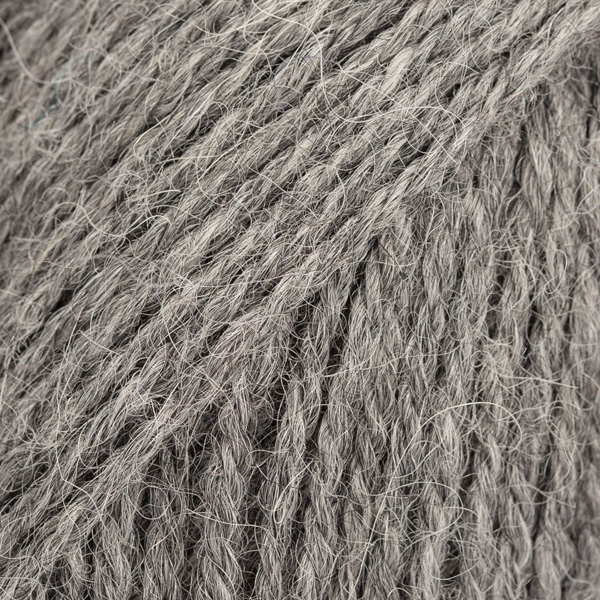












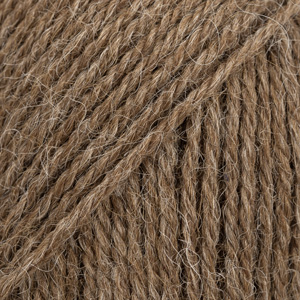





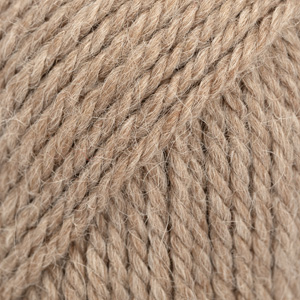




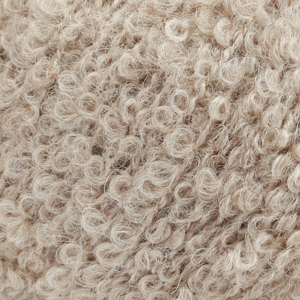











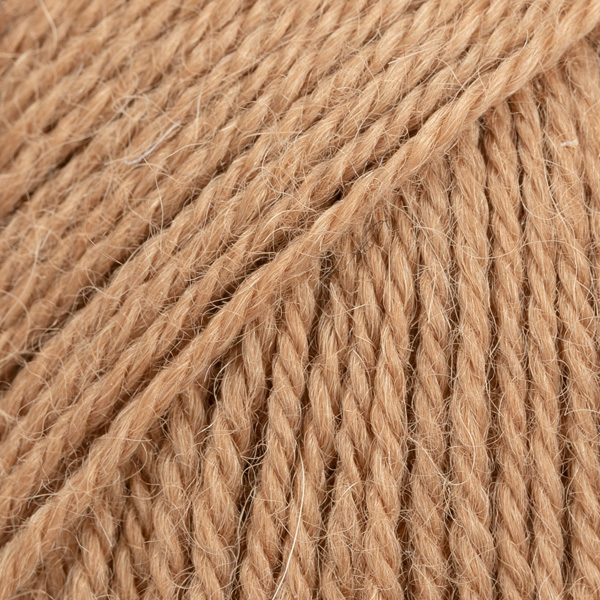










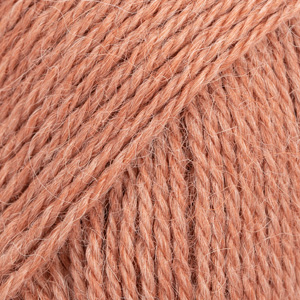
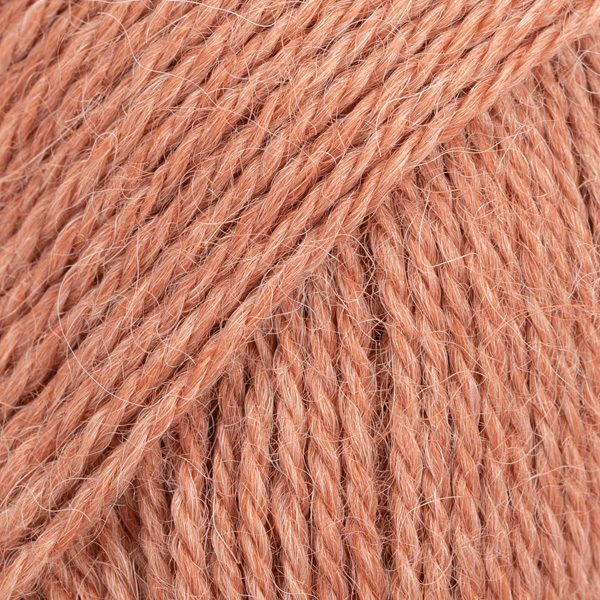










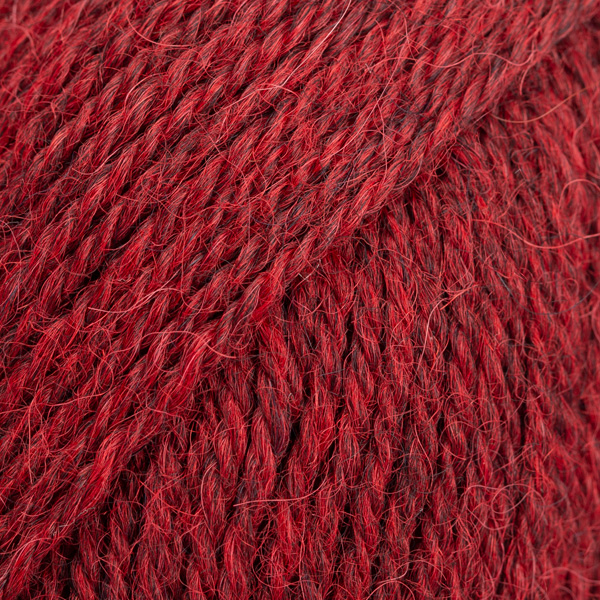
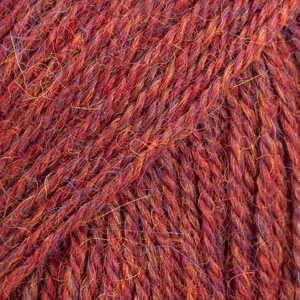



















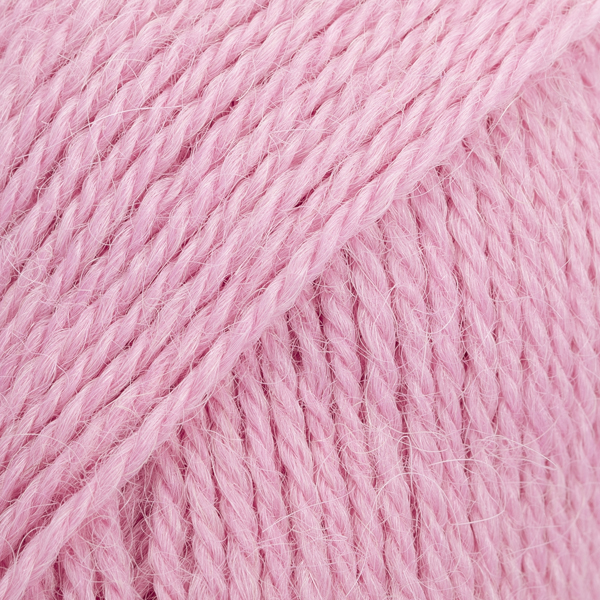


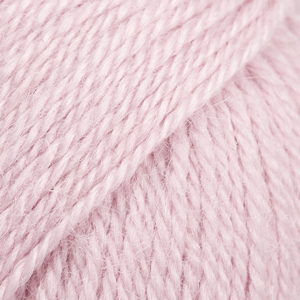









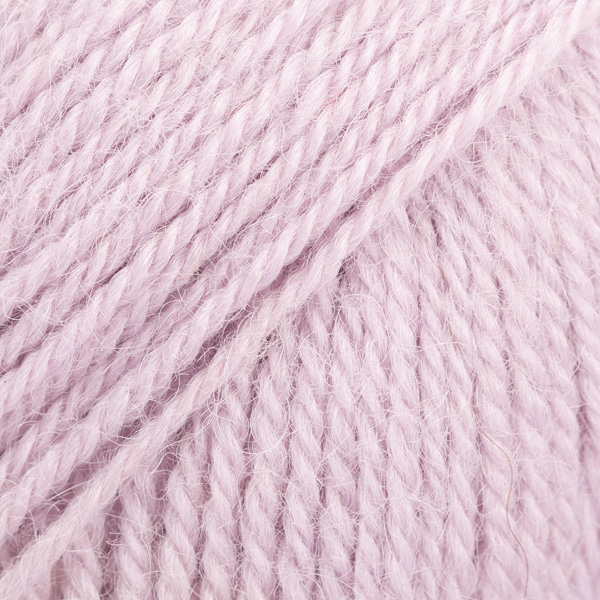










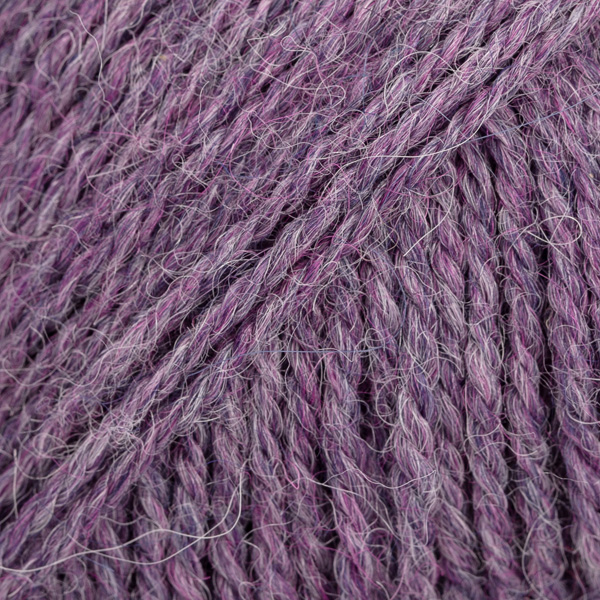



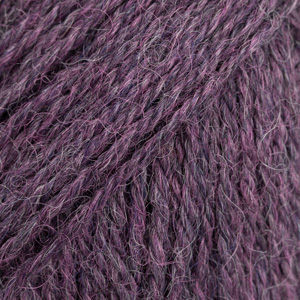






























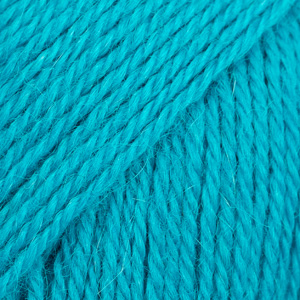

































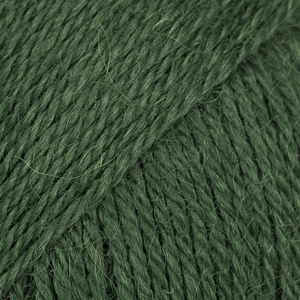







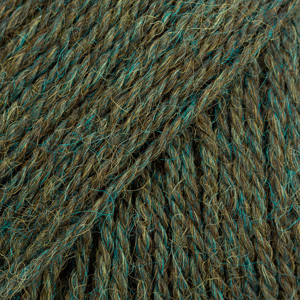
























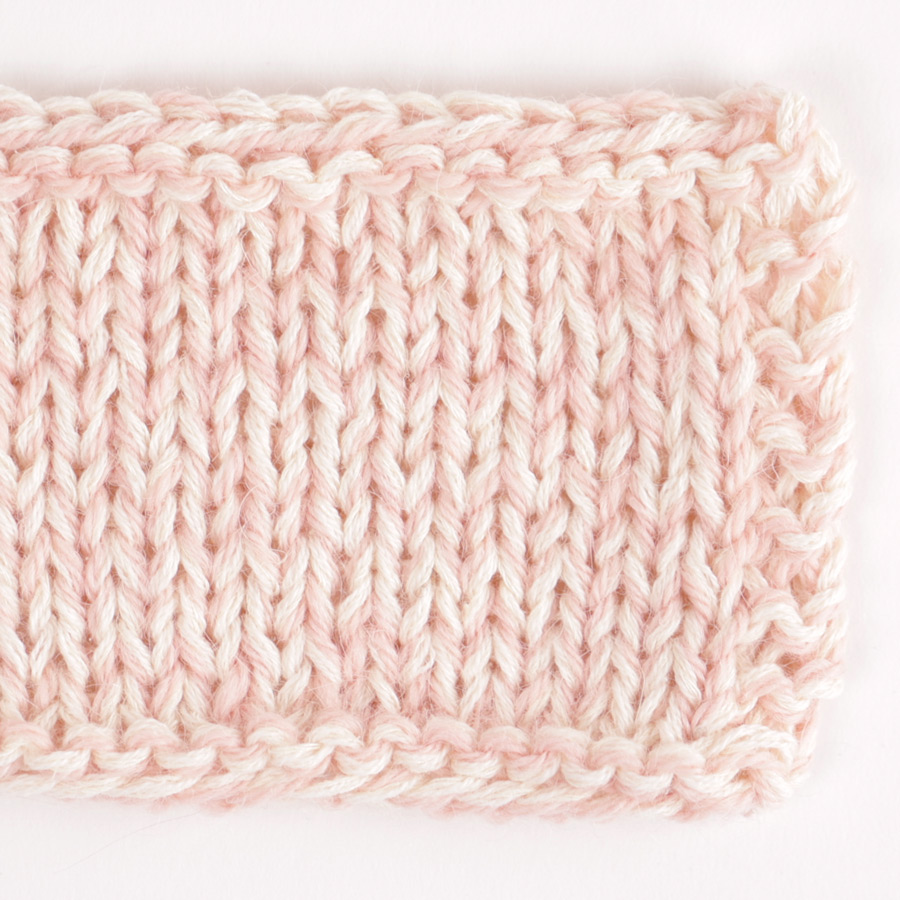



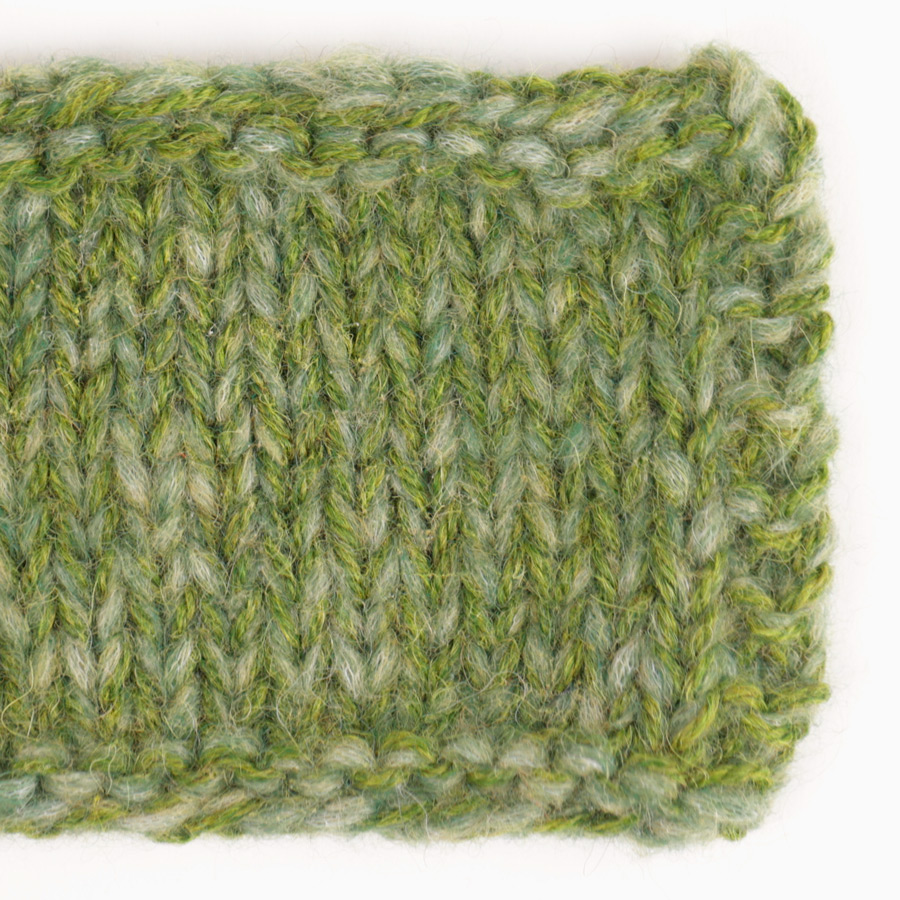





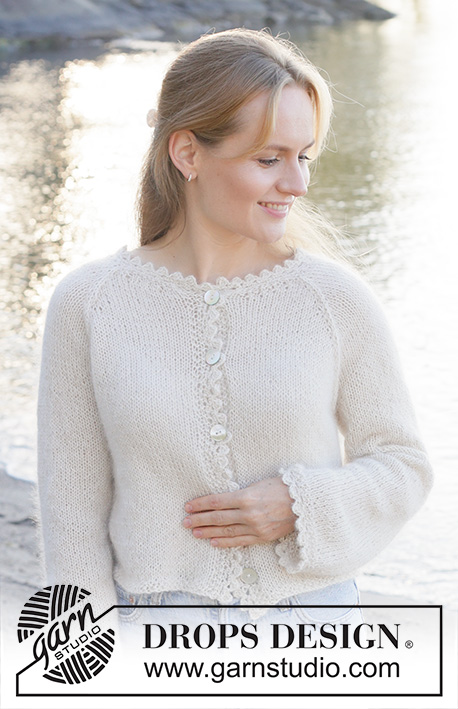


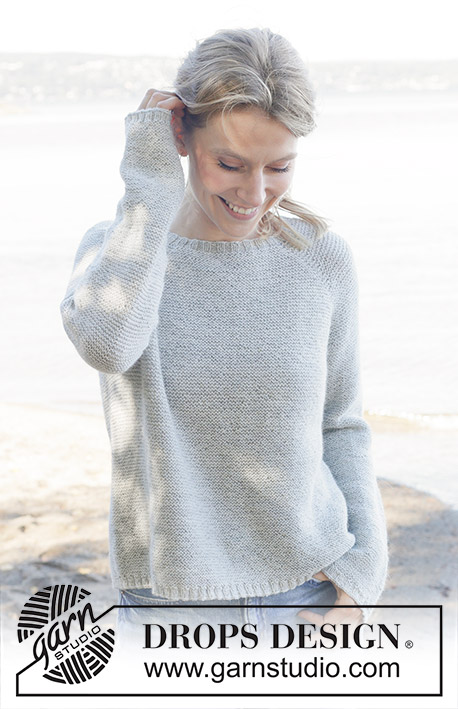








Bonjour , est-il possible de commander un échantillonnage des couleurs de la laine alpaga.
31.05.2025 - 19:17